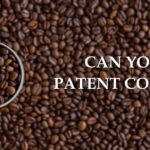Top Ten Patent Myths
If you have ever thought up a great solution to an everyday problem, or maybe watched a show like Shark Tank and said, “Hey, I could have made that!”, then you probably have questions about patents and inventions. This series explores the top ten patent myths, misconceptions, and misunderstandings we hear the most often as patent attorneys.

#10 – “Once I get a patent, I can start selling my products.”
Nope! There is no requirement to have a patent before you can sell a product. In fact, your patent really has nothing to do with your ability to sell your invention, but it does affect your ability to protect it.
In a very basic sense, a patent provides you with the right to exclude others from making, selling, or using your invention without your permission. A patent is essentially like the fence around your backyard. The fence does not give you the ability to use your backyard, but rather it lets others know this is your property and prevents them from using the land without your permission. So, technically speaking, you are free to market and sell your inventive product with or without a patent.
“Then what’s the point of a patent if I don’t need one to sell my invention?” To stop others from copying your work! Without patent protection, anyone or any company could simply copy your exact design and then start selling the exact same product. A patent can provide you with the right to put up a “No Trespassing” sign for your invention.
Therefore, while a patent does not give you the right to make and sell your invention, it can provide important protection against someone else profiting off of your hard work and creativity.
#9 – “Once I file my invention, in a few months the patent office tells me whether I get a patent or not.”
Not quite! Obtaining a patent does involve a decision made by the U.S. Patent and Trademark Office, commonly referred to as the USPTO. However, the process is somewhat lengthy and usually involves give and take between your patent attorney and staff at the USPTO.
The first step is to file an application for a patent, which is very basically a legal request for patent protection prepared by your patent attorney that describes your invention. Once filed and reviewed by the USPTO staff for errors and informalities, your application is then placed in further processing to be assigned to a specialist known as a patent examiner who handles inventions of a particular technology. The patent examiners are trained to evaluate your invention in view of what has been done in the past to determine if, in their opinion, your invention is indeed new. Typically, the patent examiner will not begin reviewing your case until about 12-18 months after your application is filed.
After review, the patent examiner will issue a reply known as an office action, and it is usually a negative response! But don’t worry, you have a patent attorney to help you out! Your patent attorney will present arguments on your behalf as to why you are entitled to a patent. If successful, the patent examiner will be persuaded to change his or her mind and your application will be allowed to proceed further into an actual patent. This back and forth also takes time, so it is not uncommon for the entire application process—from filing to issue of a patent—to take two to three years.
The bottom line is that while the process does take longer than you might think and very often involves an initial negative response, it is not a quick “yes or no” endeavor, especially if you have a patent attorney to represent you and fight for your patent rights.
#8 – “I would like to trademark my invention.”
This is something we hear quite a bit! While trademarks are indeed valuable intellectual property and could be related to your invention, a patent is what you are looking for to protect your new product or way of doing something.
Trademarks, as the name implies, are things you use to “mark” or identify your product or service in “trade,” that is, business and commerce. When an individual or business sells a product or service, it is important for the consumer to be able to identify where the product or service came from. For example, if you purchase a burger from a fast food restaurant, how do you know who made the burger? The outside packaging! When the wrapper says McDonald’s or Burger King or Wendy’s, you have an instant expectation of what is inside. If you open a Wendy’s wrapper and there is a Big Mac inside, you would be confused. A trademark registration protects those identifying words or phrases from being used by others so your customers know from whom the product is being supplied. The customers can then make educated decisions on what to buy based on their past experiences and knowledge of that brand.
However, the trademark does not protect the right to make, sell, or use the product itself. As Chik-fil-A often advertises, they did not invent the chicken sandwich, so they do not have a patent on it that prevents others from making and selling chicken sandwiches. To be sure, others cannot mark their chicken sandwiches as “Chik-fil-A” brand because that is a registered trademark.
So, when you invent something and want to reserve the exclusive right to make, sell, or use it, then a patent is the way to go. That being said, if you want to market and sell your invention, and you have a catchy name or logo that you want to use to identify your product in the marketplace, then you are looking at trying to secure trademark protection in addition to your patent.
#7 – “I need to build a prototype first.”
While working prototypes are useful and demonstrate that you have a functional device, they are not required in order to file a patent application.
A patent application only needs to provide what is known as an enabling disclosure to meet the requirements of the U.S. law and practice. An enabling disclosure is a description of your invention that contains sufficient details so that a person who is skilled in the technology to which the invention is most closely related could make or practice your invention. In other words, you need to provide enough information so someone else with related technical skills could duplicate what you did.
For example, we can imagine a car engine that gets 500 miles per gallon of gas. However, it is not enough to simply say “do it!” You need to describe what components of the engine make that happen. Would you need to describe every detail of the engine, like bolts and wires and hoses? No, those are common parts that any automotive manufacturer would know. But you would need to describe the key parts that make this particular engine produce such results. And if that description effectively provides the “blueprints” to build the engine, then the patent application is complete, whether you have actually built the engine or not.
To be fair, actually building your invention and proving that it works in the real world is useful from a marketing and cost-benefit analysis, as well as showing that your corresponding description is enabling to others. However, it is not a requirement to pursue patent protection. A patent attorney can help you determine if you have sufficient disclosure and fill in the gaps with additional information to make your disclosure more complete.
#6 – “We need to do a good job the first time because you only get one patent.”
Nothing could be further from the truth, at least with respect to only getting one patent.
If you have ever looked at a product packaging or the product itself, you likely have seen a whole list of patents for the product. Each of those patents is for a different aspect or concept relating to that product. In other words, there is more than one patent for this invention.
Patent applications contain a description of the invention as well as variations thereof. An invention not only could be executed in different ways, but sometimes inventors come up with multiple ideas connected to one central concept, each of which is its own unique idea. For example, maybe you invent a new kind of children’s toy that requires a special childproof lock in addition to the toy itself. Or maybe the toy could be made from different materials or have a different design. All of these concepts could be filed in one patent application, but unfortunately the patent itself is usually restricted to one invention at a time.
To further explain, patent rights are defined by the patent claims, which form a special portion of the patent application that essentially says, “This is what I own.” So, in a very basic sense, the patent application can describe multiple inventions, while the patent claims usually assert ownership for only one or two of them.
The good news for inventors is that additional patent applications, known as continuation or divisional patent applications, can be filed based off of the first patent application. These additional applications can provide a broad patchwork of overlapping and related patent rights. Therefore, while it is indeed very important for you and your patent attorney to do a good job with the first application, you are not limited to only that application.
#5 – “I would like to add another person’s name to the patent so we both own it.”
It is not uncommon for inventors to want to add another person, such as a spouse or family member, to their patent applications, such as for ownership or financial considerations. However, this is not permissible unless that person is an inventor too.
For example, when you buy a house or car, you might want to add another person to the title. Spouses often have both of their names on the house in the event that one of them passes away so that the property will go to the surviving spouse. Two names on a title also ensures equal control over the property. Or maybe the ownership share is in exchange for a financial benefit, such as when another person puts up money to help buy the property.
This is not the case with patent applications, at least not with respect to inventorship. The only persons who may be named as inventors are persons who contributed to the development of the invention. It is a bit more complicated than that under U.S. law, but for our discussion it is enough to say that if you did not work on the invention at all, you cannot be listed as an inventor in order to share ownership. In fact, naming a non-inventor as an inventor on a patent application is improper and could be considered fraud that could jeopardize all patent rights resulting from the application.
That being said, it is possible to share or transfer ownership of patent rights to a non-inventor through an additional agreement, such as a license or assignment. Consult your patent attorney to discuss options as to how you can best involve another person or a business in having a stake in developing your invention and any patent rights for it.
#4 – “Once I get my patent no one can steal my invention.”
This is somewhat accurate but does not paint a full picture. For most inventors, the biggest concern is theft of their inventions, specifically some nefarious individual profiting off of their hard work. Patent rights indeed provide a legal claim to your invention that excludes others from “stealing” it, that is to say, making, selling, or using your invention without your permission.
The technical term for such unauthorized activity is infringement. Generally speaking, a third party infringes your patent rights when they make, sell, or use your patented invention without your permission. While such activity is a violation of your patent rights, that does not mean people won’t do it! Unfortunately, unlike regular crime, it is up to you to protect your rights. There are no “patent police” that will chase down the thieves and stop them from infringing your patent rights. If you believe infringement has occurred, you can speak with your patent attorney about what action you can take against the suspected infringer, whether it is an individual or a business, with the ultimate remedy being the filing of a lawsuit for patent infringement.
Unfortunately, patent lawsuits are quite expensive and time-consuming—and you have to foot the bill. The good news is that the infringer also has to expend time and money to defend against the lawsuit. As a result, few patents actually proceed to litigation because of these cost concerns. Therefore, in most instances, the threat of a lawsuit is enough to deter infringers because of the potential cost and the investment of time and effort, especially for larger companies that need their executives and management focused on business, not lawsuits. It is like an alarm system for your house. Thieves could break in, but the risk presented by the alarm system can be enough to ward them off. From a practical perspective, a patent often has greater value as a deterrent than as a weapon against infringers.
So, while other parties could “steal” your invention, even if you have a patent, they do so at their own risk, and often that risk can be enough to convince them not to do it in the first place.
#3 – “I have to file a patent application right away or someone will steal my invention.”
As we discussed above, theft of an invention is usually at the top of the minds of inventors. They worked hard and invested time and money in their inventions, so they rightly believe only they should profit from their efforts.
In that regard, one of the biggest fears is a third party filing a patent application for the invention before the inventor has a chance to do so. In some ways, this could be a legitimate fear, but not due to theft. The United States is a “first-to-file” country, which generally means that the first party to file a patent application for an invention has the superior claim to the patent rights for that invention. In other words, if someone else comes up with the same invention and files for it before you do, that person has the opportunity to secure the patent rights.
The key here is the idea that the other person “comes up with” the invention. What other people cannot do is steal your idea from you and then file for it as their own idea under their names. Under U.S. law, you, as the true inventor, could pursue correction via a procedure known as a “derivation proceeding.” This is a fancy term to describe an official proceeding conducted by the U.S. Patent and Trademark Office to determine if the “fake” inventor actually developed the invention by his or her own efforts, or if the invention was derived or “stolen” from you.
Unfortunately, the derivation proceeding is challenging and there is no guarantee of success. So, the advisable course of action is to file a patent application as soon as possible to minimize the chance of someone stealing your idea. More importantly, filing right away avoids the much greater and legitimate risk that someone out in this big wide world is having the same “eureka” moment as you! Consult a patent attorney as soon as you develop an idea for advice as to how to protect your patent rights.
#2 – “I’ve kept my invention secret and only told a few people.”
Myths #3 and #4 related to theft of an invention, and one of the most important ways to protect your invention is to keep it secret. This is known in the patent field as maintaining confidentiality. If no one knows about it, they can’t steal it.
Confidentiality, however, is much more than a security system against theft. It can prevent your patent rights from being altogether lost! To further explain, generally speaking patents are for inventions, that is, new ideas and items that have never been seen before. You can’t exactly claim to have invented something if it is already demonstrated as being in existence somewhere in the world. In patent practice, existence is established by the information being available to the public. Public availability is most commonly proven by publication in printed material or online, sale of the items, or use of the items in public areas. It could even be established by showing there were oral communications to the public. The bottom line is any time you put information about your invention into the public domain, you risk destroying the confidentiality, and thus risk destroying your patent rights.
To maintain confidentiality prior to filing a patent application, simply keep your ideas to yourself–don’t tell anybody! If you do need to involve another person in the development of your invention, consult a patent attorney about getting a non-disclosure agreement. A non-disclosure agreement requires the other person to keep the invention secret and between the two of you, thus maintaining confidentiality in the eyes of the law.
If you have publicly disclosed your invention, it may or may not be a complete disaster depending on where you want to obtain patent protection. Most every country has its own patent law, and many consider public disclosure to be an immediate bar against filing for patent protection. Thankfully, the U.S. and some other countries have instituted a “grace period” in which you can still file for a patent after the first public disclosure. The grace period in the U.S. is one year from the first public disclosure.
Maintaining confidentiality is vital, and a patent attorney can help you do that, as well as advise you of your rights in case that confidentiality has already been breached.
#1 – “I’ve never seen this anywhere, so I know I can get a patent for it.”
By far the statement we hear the most is this one, and it logically makes sense. You wouldn’t be thinking it is your invention if you saw it somewhere else!
The problem is that the world is a very big place. Our population is over eight billion people. Presently, there are over 11 million patents issued in the United States, and there are millions more around the world. And those numbers are only for patented inventions. There are countless more devices and concepts out there that were never patented. So, the fact that you have not seen your invention anywhere is hardly proof that it is an invention that no one else developed, especially given the global pool of human creativity, both past and present.
To be fair, sometimes that knowledge is decent proof of novelty. For example, if your invention is in a technology that you have worked on for 20 years, your odds of knowing what is “out there” are pretty good, so not seeing your invention anywhere in your field or job can give you some confidence that it might truly be new.
A patent search can be conducted by your patent attorney to help you evaluate your chances of getting a patent. A trained searcher or the patent attorney will search for related patents and publications to see if there are similar inventions available. While by no means conclusive, the patent search can be a valuable tool in deciding whether or not to proceed with a patent application, as well as help pinpoint what it is about your invention that is, well, inventive!
Finally, if you file a U.S. patent application, the staff at the U.S. Patent and Trademark Office known as patent examiners will review your patent application and make their own search. They not only look for similar inventions, but also related inventions that could theoretically be readily combined to arrive at your invention.
This question of patentability is where a patent attorney’s knowledge and experience are critical. Your patent attorney can develop a strategy to increase your chances of obtaining a patent, as well as argue on your behalf if the examiner rejects your patent application.
Not seeing your invention anywhere is a good starting point for deciding to pursue a patent, but it is no guarantee of a positive outcome, so be sure to consult a patent attorney to help you make educated decisions about how to proceed.






